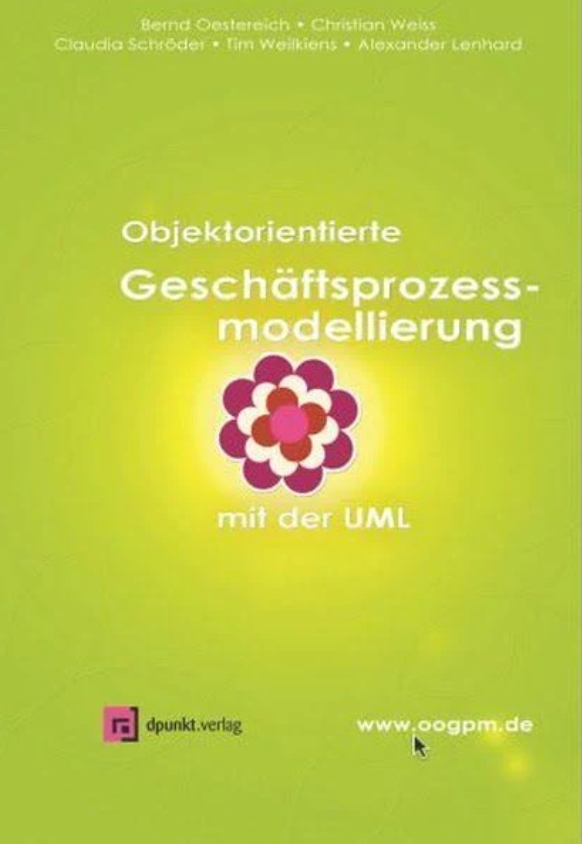Bernd Oestereich, Christian Weiss, Claudia Schröder, Tim Weilkiens, Alexander Lenhard.
Objektorientierte Geschäftsprozessmodellierung mit der UML.
dpunkt.verlag. 2003.
The authors of this book have further developed modeling techniques originating from computer science, thus building a bridge between business administration and computer science. They show how the international standard Unified Modeling Language (UML 2.0) can be used to obtain a consistent and uniform notation and methodology between these two areas. Key benefits of business process modeling using standard computer science techniques are described:
- Continuity from business process analysis to information technology automation of these business processes
- Proven and established computer science techniques such as design patterns can be applied to business process modeling.
- Traceability of business requirements to implementation
- Better understanding, i.e. softening the barrier between process modelers and system analysts
- Broad tool support
The book presents a clearly structured simple guide to business process modeling and shows in a kind of methodology map how the methodology can be varied for different modeling purposes (outsourcing, business merger, optimization, automation, etc.). Last but not least, the book impresses because of its numerous practical tips, checklists, templates, etc. The website for the book: www.oogpm.de “An important aspect of the oose method is the greatest possible simplicity and the associated commitment to the principles of agile software development. In addition, the approach illustrated in the book with many examples is vendor-neutral and can be combined with almost any common UML tool.” From the foreword by Prof. Dr. Heidi Heilmann
